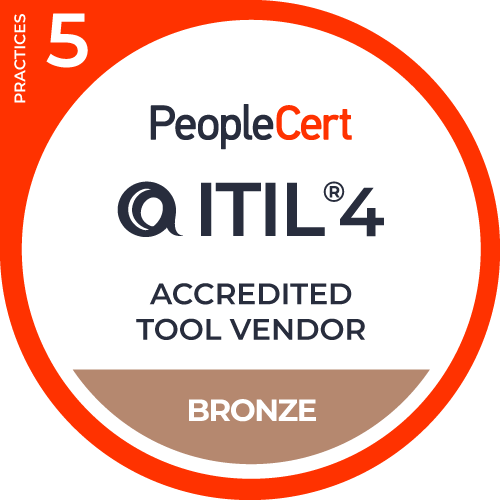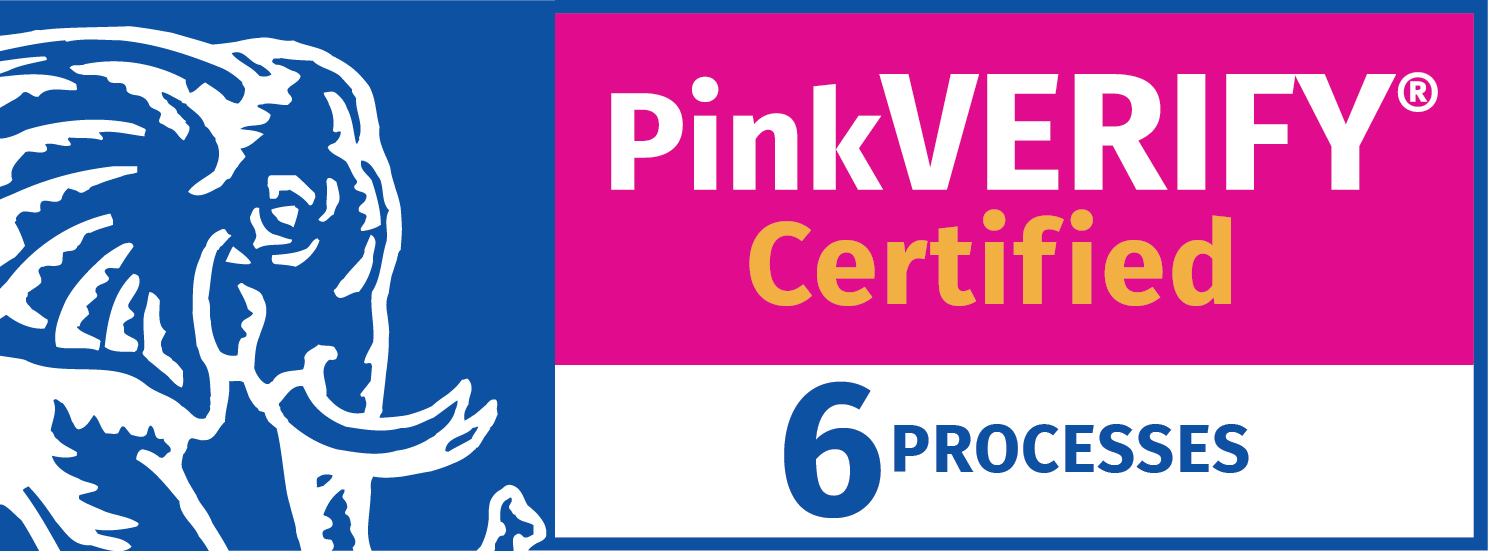The Definitive Guide to ITIL
Find out ITIL's meaning, the difference between ITIL v3 and ITIL 4, and its management practices.

The Definitive Guide to ITIL
ITIL is the gold standard for IT Service Management (ITSM). In short, it provides a set of best practices that help organizations deliver efficient IT services.
It’s no news that IT environments have become increasingly complex. Meanwhile, the demand for quick and efficient service delivery has become the norm. This shift has led organizations across different industries to adopt frameworks such as ITIL to keep pace and stay competitive.
So, ITIL is an ITSM framework designed to guide organizations in aligning their IT services with business needs, ensuring that every aspect of IT Service Management — from incident response to continuous improvement — is optimized for performance and customer satisfaction.
This guide will help you harness ITIL's full potential for your organization! Because we know that the standard can seem complex and slightly overwhelming (especially for those who are just getting to know it), here we will break down its core principles and methodologies in a clear and organized manner.
Follow us as we explore the framework's fundamentals, its relation to ITSM, the core processes, best practices, and how to implement ITIL to drive value and efficiency.
What is ITIL?
ITIL (formerly known as Information Technology Infrastructure Library) is a framework that helps businesses manage and deliver IT services effectively. The standard provides a structured approach to ensure that IT services support and align with the organization's needs and customer expectations.
AXELOS, the organization responsible for ITIL, describes it as “the most widely used guidance in the world on IT Service Management” and “best-practice guidance for IT Service Management.”
The history of ITIL
Before 2019, ITIL was primarily known as a collection of books outlining best practices for managing IT services, a concept known as ITSM. However, at one point organizations started to realize that these principles and capabilities could improve operations, services, experiences, and outcomes across various business areas, not just IT. So, as professionals started to apply ITSM principles outside of strictly IT (practice which is referred to as Enterprise Service Management), ITIL's scope expanded too.
With the appearance of ITIL 4 in 2019, the focus shifted from ITSM to a broader concept of Service Management. As a result, references to ITSM are minimal in ITIL 4 literature unless absolutely necessary. ITIL is now presented as a body of Service Management best practices. This has impacted the guidance it provides, the terminology used, and even how it is defined.
You might be thinking, “But it’s the IT Infrastructure Library, right?” Although this is historically correct — before the ITIL 3 version in 2007, ITIL was an acronym for the IT Infrastructure Library — with its latest version, the longer-form nomenclature was dropped.
So, to clear any confusion, ITIL is now just a name: ITIL simply means “ITIL” and its scope runs for Service Management in a broader sense, not just referring to IT as it did in its first years of existence.
ITIL v3 vs. ITIL 4
One could argue that ITIL 4 was well overdue in 2019, given that ITIL v3/2011 was released in 2007 and then refreshed in 2011. So much changed in the world, let alone IT, between 2011 and 2019.
The key drivers for replacing ITIL v3 (2011 Edition) are expressed clearly in Stuart Rance’s blog. Some of the main pain points of the 2011 edition were:
- The approach was mainly process-centered.
- Capability implementation worked in silos where different teams operated different ITIL processes separately.
- Had too little focus on value, outcomes, costs, and risks.
- Has little compatibility with Agile, DevOps, Lean, and other management approaches.
- Lacked support for digital transformation (a business need already a decade old in 2019).
- It relates to Service Management rather than ITSM.
- It introduces the Service Value System with the Service Value Chain at its center.
- “Management practices” replaces the processes in ITIL v3 (2011 Edition).
- The Practitioner book’s Guiding Principles are now part of the core ITIL guidance.
- The Four Dimensions of Service Management replace the “four Ps” of ITIL v3 (2011 Edition).
"The main difference between ITIL 3 and ITIL 4 is that in ITIL 4 we are in a conceptual model. Up to ITIL v3, you are in a numerative model that must meet the success of ITIL because people hate thinking, they want ready-made solutions. They want, ‘Okay. I take this book, I open it, I know what I have to do to manage an incident.’ (...) (ITIL 4) are not processes anymore, they are practices. You have to think about the tools that you can use, about the level of maturity of your users, and so on, and so on. And then comes with this service value system and the service value chain. It's a model, but it's a model that you have to use each time in a different way."
David Billouz, ITIL Master
Despite the recent transition to ITIL 4, many organizations still stick by ITIL v3. This is because the practices outlined in that version are still highly effective and provide a robust foundation for managing IT services.
So, you can adopt the newer version of the framework or stick with the tried-and-true methods of ITIL v3; both offer valuable tools and guidelines for optimizing IT Service Management. The ultimate choice will depend on what your organization is looking to improve.
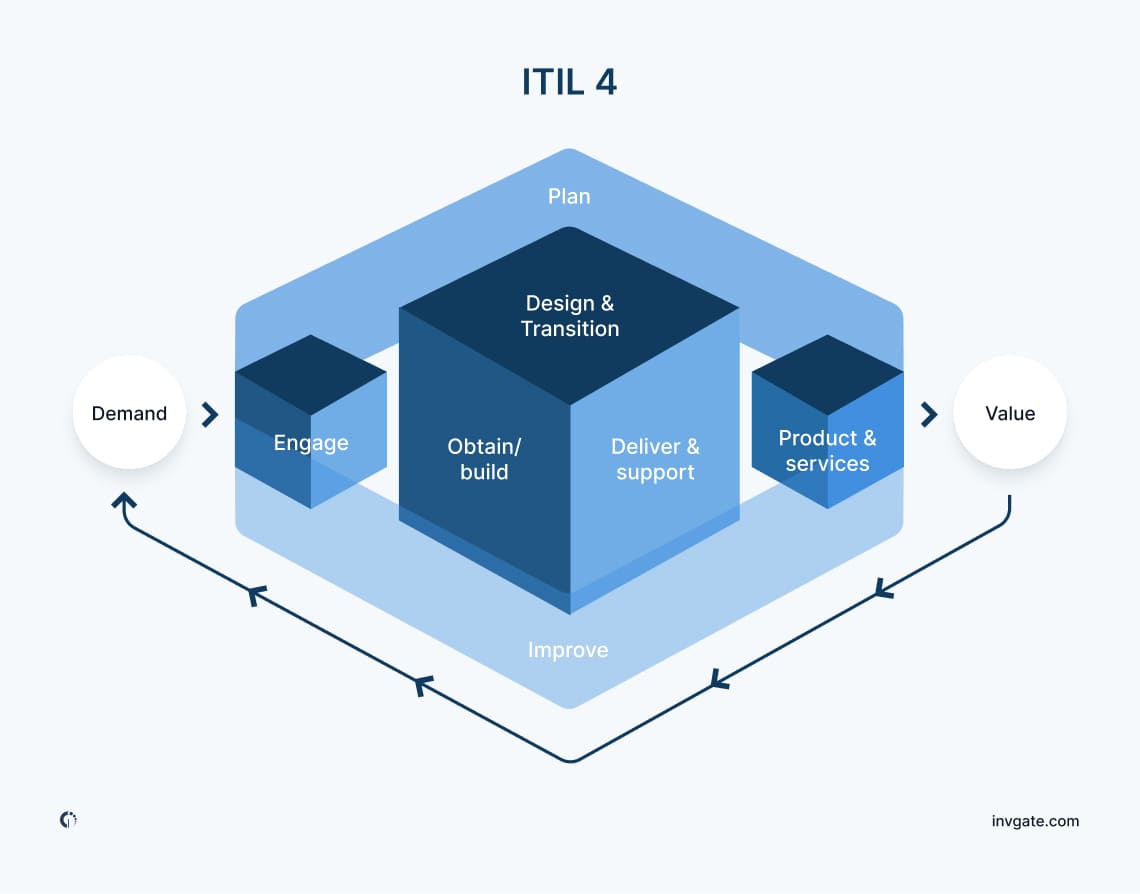
Why is ITIL 4 important? 5 benefits
ITIL adoption will benefit your organization across three areas: first, the implementation of ITSM or a Service Management approach; second, the use of specific ITIL best practices; and third, the use of ITIL-aligned ITSM tools to deliver enhanced versions of otherwise manual practices.
The benefits of ITIL adoption start with the generic benefits of ITSM. At that point, the focus of IT delivery and support moves from individual technology domains to the delivery and improvement of IT services. Using standard practices and defined responsibilities increases speed and efficiency, reduces costs, and provides better user experiences and outcomes.
Here are some advantages:
- Enhanced customer experience: ITIL 4 focuses on understanding and meeting customer needs. You'll look at customer journeys and work with them to create value. Your services will better address what users want. As a result, customers will be happier and more loyal, boosting your business value. The framework helps you build a culture that always puts the customer first.
- Improved agility and innovation: It’s possible to connect ITIL 4 to the ideas of adaptability behind Agile, Lean, and DevOps. It will help your organization respond better to market changes and new technology. You'll find it easier to adapt to new opportunities and challenges, and your teams will keep improving and coming up with new ideas.
- Better alignment with business strategy and objectives: This version of the framework takes a strategic approach to Service Management. It links your IT and other services to your overall business plan, which helps you create more value and stay ahead of competitors.
- Increased efficiency, productivity, and cost optimization: It helps you standardize, automate, and improve processes. You'll reduce waste, break down silos, and improve how people work together. The result? You'll work more efficiently, get more done, and spend less.
- Resilience: If you apply ITIL 4, it can strengthen your organization's ability to manage risks and build resilience. It provides a structured approach to identifying, assessing, and mitigating risks across your service portfolio. With this framework, you can prevent service disruptions, protect your reputation, and ensure business continuity.
ITIL v4 can help you improve several key processes:
- You'll learn how to design, develop, and launch services that customers want and that provide value. This includes defining what services to offer, designing how customers experience them, and planning how they'll work.
- ITIL 4 gives practical advice on daily service operations. This covers handling requests, solving problems, and keeping service quality high. You'll learn how to monitor performance, get feedback, and keep improving your services to meet customer expectations and deliver value.
- Through standardization, workflow automation, and improved processes, ITIL 4 helps your organization reduce waste, eliminate silos, and enhance communication and collaboration. You'll see increased efficiency, productivity, and optimized costs.
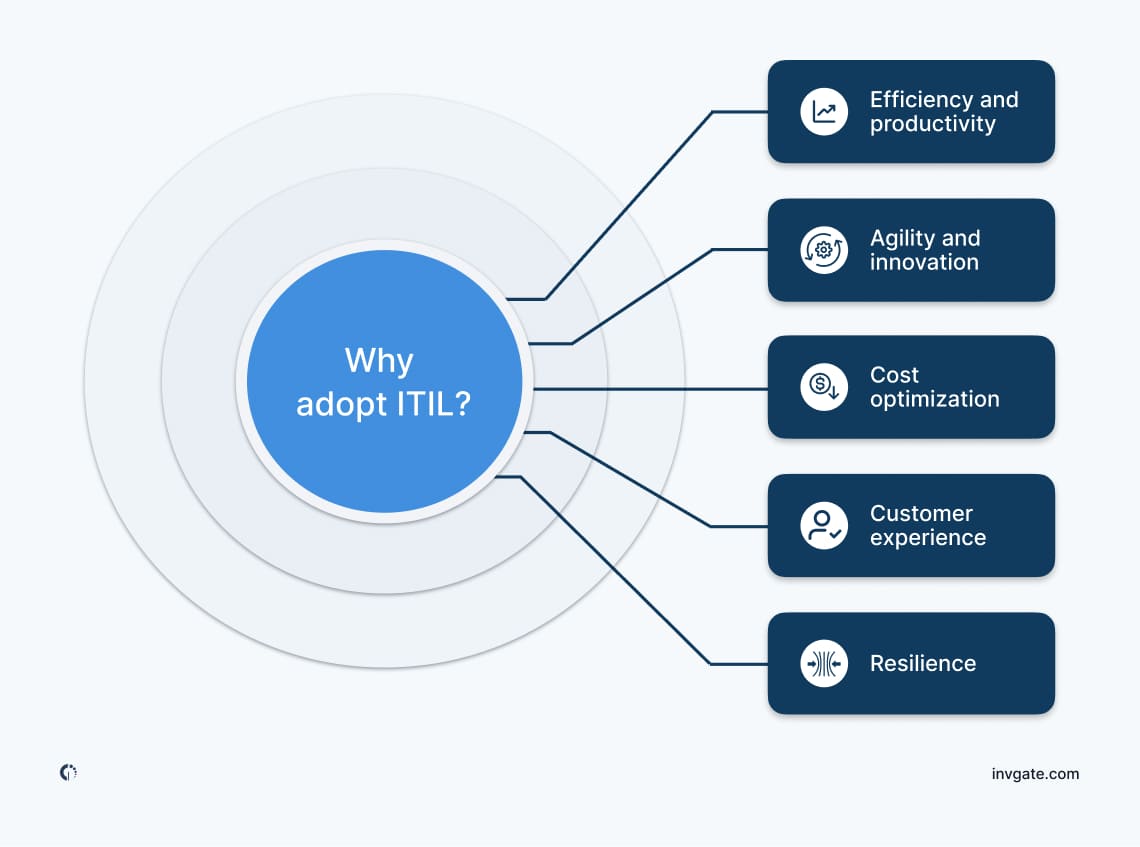
The 7 ITIL guiding principles
These principles were introduced in ITIL 4 and serve as fundamental guidelines to help organizations make decisions and take actions that align with IT Service Management best practices.
1. Focus on value
The first and, in our opinion, the most important ITIL guiding principle is to focus on value. You should center all your decisions and activities around delivering value to your customers and users. Regularly ask for and review customer feedback to understand their needs and expectations. Define clear service outcomes and keep measuring and evaluating your service performance against those expectations.Katrina Macdermid, Consultant, educator, and ITSM maturity assessor
2. Start where you are
The second principle is to start where you are. You should be building on what you already have rather than starting from scratch. Before making any changes, take a good look at your current situation: understand your existing processes, resources, and capabilities and make the most of them.3. Progress iteratively with feedback
What does progress iteratively mean? Instead of trying to implement large-scale changes all at once, you should make incremental improvements. Break down your projects into smaller, manageable parts and implement changes step by step. This way, you can assess their impact before moving forward.4. Collaborate and promote visibility
This principle encourages teams to break down silos and ensure that information is readily available to all stakeholders. You must foster a culture of open communication and collaboration. For this, you can use tools and technologies that enhance visibility and information sharing.5. Think and work holistically
Consider the entire service lifecycle and how different components interact with each other. Are all parts of your organization working together towards common goals? Think about the impact of your decisions on the entire service lifecycle and make sure all your teams and departments are aligned.6. Keep it simple and practical
The sixth principle is to keep it simple and practical. Avoid unnecessary complexity and focus on practical solutions that deliver value. Think: Is there a way I can simplify this process? And remove any elements that don’t add value. Then, focus on solutions that are easy to implement and maintain.7. Optimize and automate
Lastly, let's talk about optimizing and automating. You must regularly review your processes to ensure they are as efficient as possible. There might be tools and software out there that you're missing if you don't actively look for them — tools that can automate tasks and make your life easier. Identify areas where automation can boost efficiency and cut down on manual work.The ITIL 4 practices
Now that we have provided an overview of the framework and its guiding principles, let’s get slightly more technical and explore the specific ITIL practices.
The ITIL management practices are defined as “a set of organizational resources designed for performing work or accomplishing an objective.” Each practice was developed to help organizations manage their IT services more effectively, and they cover everything from handling unexpected issues to planning for future growth.
A total of 34 management practices were introduced in ITIL 4, and they are divided into three categories, according to AXELOS. The origins of each set of management practices are as follows:
- General Management practices have been adopted and adapted for Service Management from general business management domains.
- Service Management practices have been developed in Service Management and ITSM industries.
- Technical Management practices have been adapted from technology management domains for Service Management purposes by expanding or shifting their focus from technology solutions to IT services.
General Management practices
- Knowledge Management: This practice focuses on capturing, sharing, and utilizing information within the organization.
- Organizational Change Management: Preparing, supporting, and helping individuals and teams to adopt new methods, technologies, or strategies that align with the organization’s goals.
- Project Management: It brings structure and organization to a complex process. It ensures all tasks are completed on time, within budget, and to the required quality standards.
- Risk Management: The procedures, policies, working practices, training programs, and tools to identify and assess potential threats and vulnerabilities.
- Information Security Management: An ongoing practice that builds on how organizations should prevent, manage, and prepare to respond to security-related incidents.
- Service Financial Management: Makes sure financial resources and investments are being used effectively.
- Relationship Management: Focuses on building and maintaining solid relationships with stakeholders to ensure services meet their needs.
- Measurement and reporting: Tracking and communicating key performance indicators to evaluate and improve the organization’s services.
- Supplier Management: Oversees relationships with external vendors to ensure they deliver the agreed-upon services and meet performance standards.
- Strategy Management: involves developing and implementing strategies that support and drive business goals.
- Workforce and Talent Management: A practice to ensure that the right people with the right skills are in place to deliver services.
- Portfolio Management: Oversees the selection, prioritization, and governance of projects and programs to align with business objectives.
- Architecture Management: Involves designing and maintaining the overall structure of IT systems to support business objectives.
- Continual Improvement: An ongoing process within the ITIL lifecycle that focuses on identifying and implementing enhancements to services and processes.
Service Management practices
- Incident Management: This practice focuses on quickly restoring normal service operation after an unexpected disruption. It involves logging incidents, categorizing them, and resolving them efficiently.
- Problem Management: It helps identify and resolve the root causes of incidents. Instead of just addressing the symptoms, this practice seeks long-term solutions to prevent future issues.
- Change Enablement: Also known as Change Management, This practice requires all changes to IT services to be planned, assessed, and approved before implementation. The goal is to minimize risks associated with changes and ensure a smooth transition.
- IT Asset Management: This practice involves tracking and maintaining the lifecycle of hardware, software, and other IT resources to optimize their use and value.
- Service Configuration Management: It helps organizations understand their IT environment. It’s about maintaining accurate records of IT assets and their relationships.
- Monitoring and Event Management: Monitoring and managing IT infrastructure and services to detect and respond to significant changes or issues in real-time.
- Release Management: Managing and controlling the release of new or modified IT services.
- Service Level Management: To follow this practice, you need to define and monitor service level agreements (SLAs) to ensure that IT services meet agreed-upon performance standards and customer expectations.
- Service Request Management: The process of handling and fulfilling user requests for IT services efficiently.
- Availability Management: It involves planning for potential downtimes and monitoring service availability to meet business requirements.
- Capacity and Performance Management: This practice ensures IT resources can handle current and future demands. It includes analyzing usage patterns and planning for growth.
- Service Continuity Management: This practice prepares your organization for unexpected disruptions. In this step, you create and test plans to ensure critical services can continue or be quickly restored.
- Business Analysis: Understanding and documenting business needs to inform IT solutions and improvements.
- Service Catalog Management: Maintaining a centralized list of all IT services available to users, including descriptions and ordering details.
- Service Design: It focuses on creating new or modifying existing IT services to meet agreed-upon business requirements. It’s also part of the ITIL Service Lifecycle; we’ll cover more about it later.
- Service Desk: The service desk serves as the single point of contact for users to request IT services and support.
- Service validation and testing: A practice to ensure that new or changed services meet quality and performance standards before deployment.
Technical Management practices
- Deployment Management: Ensures the smooth release and implementation of new or updated software and systems.
- Infrastructure and Platform Management: Overseeing and maintaining the physical and virtual resources that support IT services.
- Software Development and Management: The planning, creation, testing, and maintenance of software applications to meet business needs.
ITIL vs. ITSM
It’s important to understand that ITIL and ITSM refer to two different things, even though some use the terms interchangeably. Let's clear up any possible confusion between them.
ITSM is a broad practice that covers all the ways you manage and deliver IT services to meet business needs. It's the umbrella term that includes various approaches and methodologies for IT Service Management. ITSM can be implemented using different frameworks and guidelines, not just ITIL.
ITIL, in contrast, is a specific framework that can help organizations implement ITSM effectively. It provides a structured approach with detailed guidelines and recommendations for managing IT services. While ITIL is one of the most well-known and widely adopted frameworks for ITSM, as we previously stated, it is not the only one.
It's also worth noting that ITIL 4 has evolved to include broader Service Management practices, not just IT Service Management. This means it can be applied to services beyond IT, making it even more versatile.
The ITIL service lifecycle
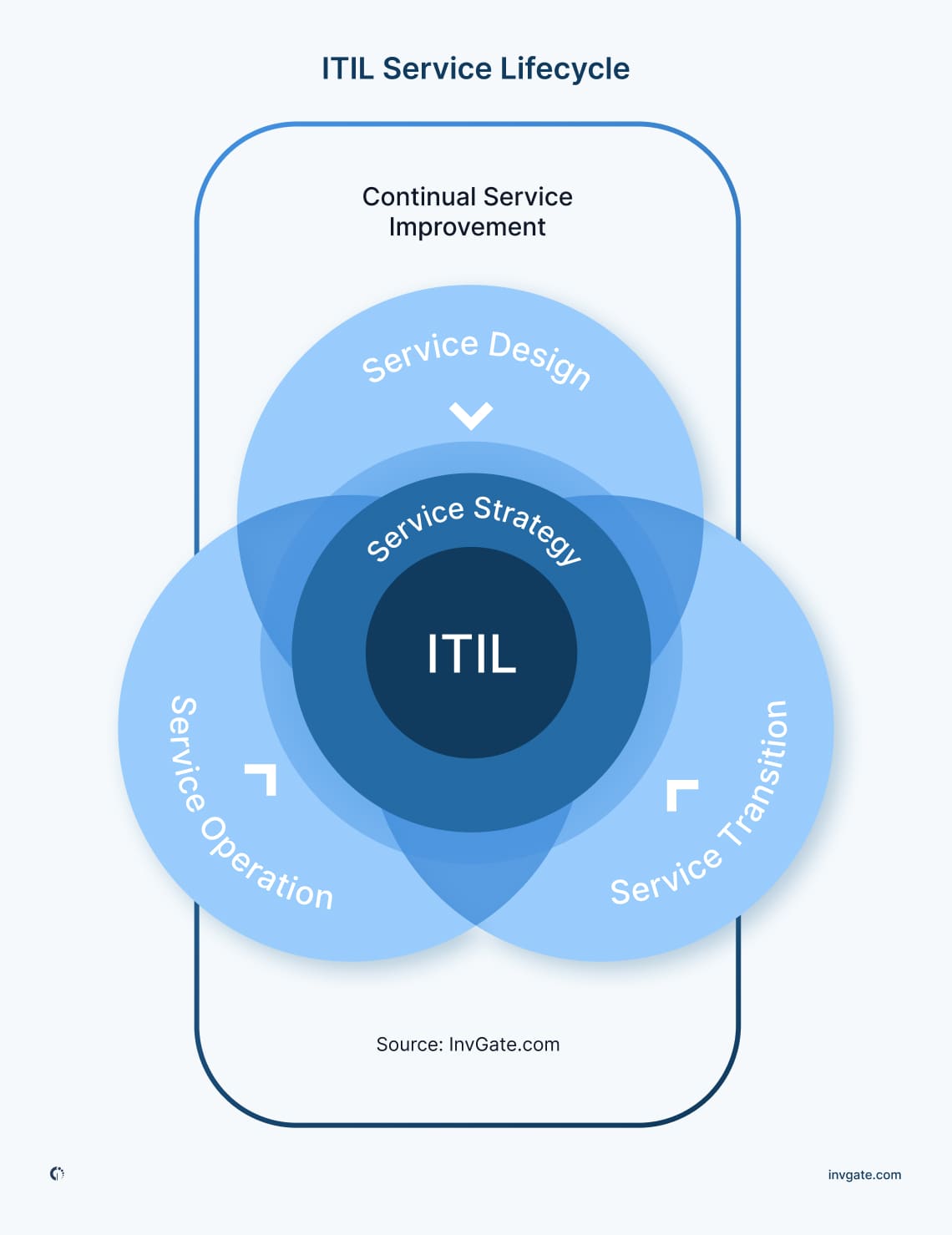
ITIL 3 divide la lifecycle de servicio en cinco etapas, un enfoque lógico y sistemático para gestionar los servicios de TI desde la concepción inicial hasta la operación y mejora continua. Cada etapa tiene objetivos, procesos y actividades específicas, y juntas forman un ciclo cohesivo que ayuda a las organizaciones a entregar valor a sus clientes y alcanzar sus objetivos empresariales. Las cinco etapas de la lifecycle de servicio son Service Design, Service Transition, Service Operation and Continual Service Improvement.
1- Service Strategy
This initial stage focuses on setting the direction for IT services. You need to define what services are needed, how they align with business goals, and how they will be delivered effectively.2- Service Design
Next, you’ll plan out the details for these services. This means designing the processes, tools, and resources to make sure they deliver the expected benefits and fit well with your business operations.3- Service Transition
When you’re ready to roll out new or updated services, this stage helps you manage the change. It also ensures that these services are smoothly integrated into your existing systems and processes.4- Service Operation
Here, you manage the day-to-day activities of your IT services. This involves handling routine tasks, resolving issues quickly, and keeping services running smoothly for your users.5- Continual Service Improvement
The final stage is about ongoing enhancement. Regular reviews help spot areas for improvement and adapt services to meet your evolving business needs.A final note: ITIL 4 introduces the Service Value System (SVS), which builds on ITIL 3's service lifecycle foundation with a more integrated and adaptable framework.
How to obtain an ITIL certification?
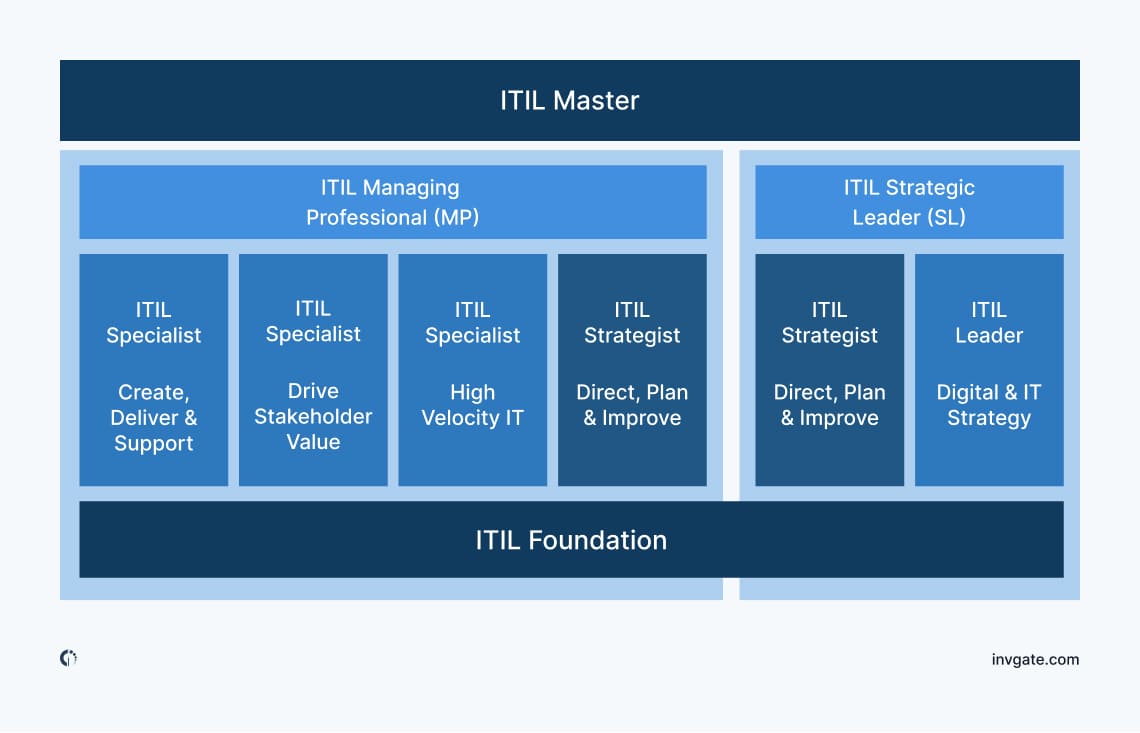
Now, how does one systematize or showcase their knowledge regarding ITIL? Well, although they are not mandatory for implementing the standard, certifications are a good way to demonstrate your proficiency in the framework.
ITIL certifications demonstrate your expertise in IT Service Management. All these certifications are provided by AXELOS, the organization responsible for managing the framework, and each accreditation builds on the previous ones.
- ITIL Foundation: This is the starting point; it covers basic concepts and terms. To obtain it, you’ll need to pass an exam that tests your understanding of ITIL fundamentals.
- ITIL Practice Manager (PM): This certification focuses on applying ITIL practices in real-world scenarios.
- ITIL 4 Managing Professional (MP): Aimed at those managing IT services, this certification covers advanced Service Management topics.
- ITIL 4 Strategic Leader (SL): For senior professionals, this certification aligns IT services with business strategy.
- ITIL Master: This is the highest certification level for experts with extensive experience with the framework. To achieve it, you must demonstrate your deep understanding and application of ITIL principles through a detailed assessment process. You’ll prove yourself as an ITIL 4 specialist.
Remember, you don’t need an ITIL certification to apply its practices in your organization. Certifications offer structured learning and can help boost your career, but you can still implement the ITIL framework without them.
ITIL best practices to implement in organizations
Now that we’ve covered the formal ITIL practices, lifecycle, and principles, let’s take a moment to focus on some broader ITIL best practices that can help you move forward with your ITIL implementation.1. Conduct a current state assessment
Before implementing ITIL, closely examine your current IT Service Management processes. Understanding existing strengths and weaknesses will help you identify areas for improvement and allow for a more tailored approach to adopting the framework.2. Define clear objectives and goals
Establish specific, measurable objectives for your implementation. Think about what you want to achieve — whether it’s improving service delivery times, enhancing customer satisfaction, or reducing operational costs.3. Engage stakeholders early
Involve key stakeholders from various departments early in the implementation process. Their insights and buy-in are essential for ensuring that ITIL practices align with business needs.4. Adopt an ITIL-certified ITSM solution
To stay on the safe side, look for an ITSM solution that is certified to align with ITIL's best practices. ITIL-certified solutions have undergone rigorous testing and validation to meet the framework's standards and guidelines.
For example, InvGate Service Management is one of the few platforms certified by PinkVERIFY and PeopleCert for ITIL 4. It meets the framework's rigorous standards for key ITIL processes such as Incident Management, Problem Management, Change Management, Service Request Management, and Knowledge Management.
5. Invest in training
Lastly, invest in training your IT staff on ITIL principles and practices. Encouraging team members to pursue a certification enhances their skills and promotes a shared understanding across the organization.In conclusion
ITIL practices provide you with a comprehensive approach to managing IT services effectively. Essentially they work together to ensure that IT aligns with business goals, delivers value to stakeholders, and continuously improves.- Deliver services that truly meet customer needs and expectations.
- Optimize resource allocation and reduce operational costs.
- Enhance cross-functional collaboration and break down departmental silos.
- Make data-driven decisions that support strategic business goals.
A structured framework like ITIL can help organizations of all sizes and industries. With ITIL, everyone benefits — from service-provider staff to service receivers (employees and potentially customers) and the organization as a whole.
We hope this guide was a strong starting point for understanding ITIL and how it can make your business more efficient, customer-centric, and value-driven!
Frequently Asked Questions
Check out InvGate as your ITSM and ITAM solution
30-day free trial - No credit card needed

